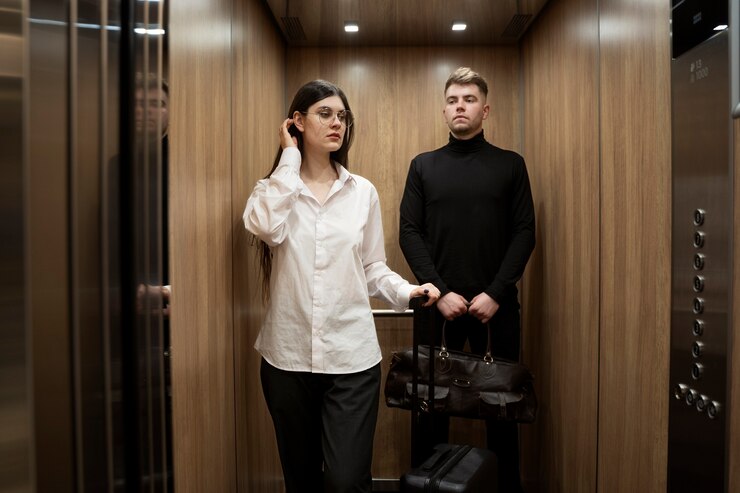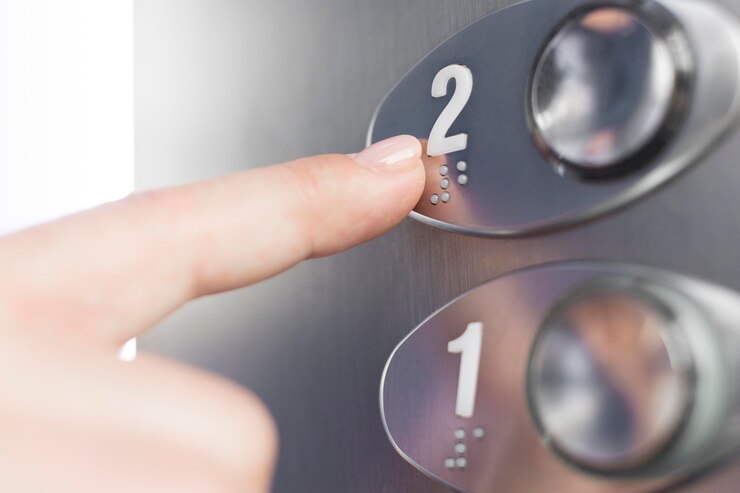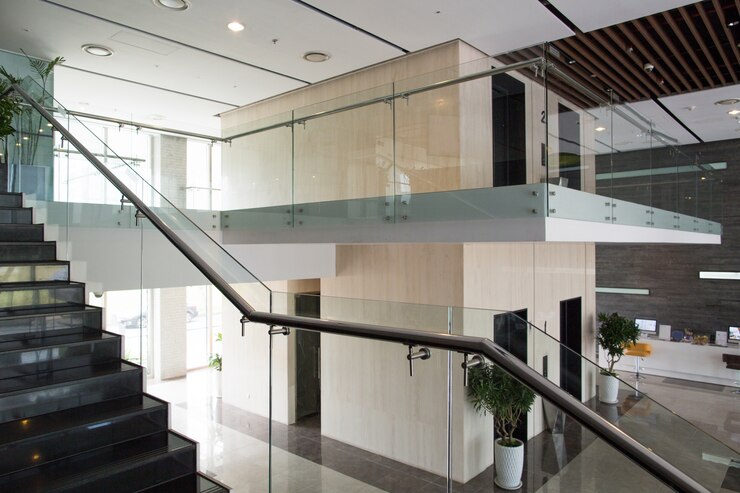
Home lifts, or residential elevators, are no longer a futuristic imagination. They are a necessity for homeowners in India, adding a touch of conventionality to multi-story buildings. But before you get swept away by the possibilities, a crucial question arises: how much does a 2-person lift cost in India? This comprehensive guide will explain the lift’s prices and some factors influencing the cost. It will also give some strategies for planning the installation of lifts for residential homes.
What are the Cost Factors for Lifts?
Understanding these key cost factors empowers you to make informed decisions when choosing a home lift. Identify features that truly matter to your needs and prioritize safety and functionality. Consulting with reputable lift installation companies and obtaining quotes based on your requirements will provide the most accurate estimate for your dream lift. Let’s delve into the elements that influence the final price tag of your dream lift.
Type of Lift
The type of elevator you select becomes crucial in deciding your overall expenses. Lift types can be catered to their models. For instance, hydraulic, traction, and screw and nut driven lifts. Hydraulic lifts and screw- and nut driven lifts are low-cost home elevators for short buildings, while traction lifts are very effective for tall buildings.
Lift Features
The features you choose for your lift can significantly impact the cost. Standard features that influence the price are:
- Doors: Automatic doors add convenience but come at a higher cost than manual doors.
- Capacity: Lifts designed for more passengers or heavier weight limits will be more expensive.
- Features: If you require features like ArtWall, shaft lights, adjustable speed, glass shaft, handrails or braille buttons for accessibility, expect an increase in cost.
Technology Used
The technology employed in manufacturing and operating the lift is a pivotal cost factor. Some factors to consider include:
- Drive System: Newer, more energy-efficient drive systems often come at a premium compared to traditional options.
- Control Systems: Touchscreen controls and intelligent features add convenience but increase the cost.
- Safety Features: Advanced features like automatic door reversal and overload protection are essential but can raise the price tag.
Number of Floors
The number of floors the lift needs to service directly impacts the cost. More floors require taller lift shafts, additional equipment, and more complex installation, leading to a higher price tag. The engineering requirements for domestic lifts in a high-rise building differ significantly from those in a low-rise structure, impacting equipment and installation costs.
Brand and Warranty
The brand of an elevator is the critical factor that will decide the level of expenses. Established brands with good reputations may cost more, but they will offer more reliability, quality, and better customer support than you cannot get with cheaper brands.

Price Ranges for 2-Person Lifts in India
Entry-Level 2-person Lifts
Entry-level 2-person lifts offer a compelling starting point. Their starting range is from INR 20 lakhs to INR 23 lakhs (excl GST) including installation. Expect a basic carrier design with simple materials like painted walls and vinyl flooring. Manual doors are standard, and the control panel might offer just the essential buttons for floor selection and emergency stop. While some options include basic lighting, energy efficiency can be achieved through simpler components. Installation costs are generally lower due to the more straightforward design.
Mid-Range Lifts
Stepping the mid-range segment covers a range of compact lifts for homes. Priced between INR 23 lakhs and INR 26 lakhs (excl GST) including installation, hydraulic, traction, or screw driven platform lifts catering to buildings with 3 floors become available. Automatic doors with safety sensors add convenience, while the carrier design might offer a broader range of material choices, like laminated panels or textured finishes. Lighting options could graduate to LED fixtures, and the control panel might boast additional features like floor displays or call buttons. Energy efficiency might be improved through features like automatic power-saving modes and regenerative solutions like SWIFTs EcoDrive.
Premium and Luxury Options
For those who envision their home lift as an extension of their luxurious living space, premium and luxury options cater to the most discerning tastes. Priced above INR 26 lakhs, these lifts become a prominent choice, offering smoother rides and serving taller buildings. Customization reigns supreme, with various options for carrier materials like wood panelling, granite flooring, and even mirrored walls. State-of-the-art lighting systems, touch-screen control panels with intercom features, and even automatic handrails elevate the user experience to unparalleled levels. Installation costs naturally climb due to the complexity of the design and the use of high-quality materials.
Overview of Energy Consumption
While home lifts undeniably elevate your living experience, it’s natural to consider their energy consumption. Here’s a quick overview:
Lift technology and customized design play a key role. Several features can influence energy efficiency. Look for lifts with LED lighting and automatic power-saving modes to minimize consumption. Domestic lifts can be more energy-efficient due to their compact design.
Remember, energy efficiency isn’t just about initial cost. It translates to lower long-term running expenses. By prioritizing energy-saving features, you can enjoy the convenience of your home lift while minimizing your environmental impact.

Strategies for Effective Budgeting for Lifts
Here are some key strategies to ensure your lift project stays within your financial comfort zone:
Decide the Features
Before delving into budget considerations, defining the features and specifications required for the lift is crucial. Consider the capacity, speed, technology integrations, and any additional features that align with the intended use of the lift. Start by listing the essential features. Basic lighting and a simple control panel might be enough for some, while others might desire advanced features like intercoms and touch screens.
Automatic doors add convenience, but manual doors are a more cost-effective option. Prioritize domestic lifts with touch-screen control panels to ensure maximum safety. Upgraded cabin materials, elaborate lighting systems, or automatic handrails add to the price tag. Evaluate each feature’s importance and prioritize accordingly.
Look for Reputable Provider
Choosing a reputable lift provider is crucial for a successful and cost-effective project. Their experiences can be invaluable. By clearly defining your priorities, you can communicate your needs to lift providers and ensure they present quotes that align with your budget. Here’s how to find the right partner:
- Experience: Look for companies with a proven track record in installing home lifts.
- Research Online: Look for companies with a solid online presence, positive customer reviews, and transparent pricing information.
Consider Financing
Lift installations can represent a significant upfront cost, and considering financing options is a considerable strategy for effective budgeting. Many lift providers offer financing plans or partnerships with financial institutions to facilitate smooth payment arrangements. Home lift installations can be financed through various options. Here are some possibilities:
- Personal Loans: Consider unsecured personal loans for smaller lift installations. However, be aware of potentially higher interest rates compared to secured loans.
- Manufacturer or Dealer Financing: Some lift providers offer financing options directly.
- Home Equity Loans or Lines of Credit: These leverage the equity you’ve built in your home to access funds for the lift project.
Look for Tax Credits
Governments often provide tax credits or incentives for investments in energy-efficient or accessibility-enhancing installations, such as residential lifts. Investigate whether your lift installation qualifies for any tax credits or deductions. These incentives can significantly offset the initial cost, making the budgeting more favorable. Consult with tax professionals to maximize the potential benefits of lift installations in your location.
Get Everything in Writing
Before finalizing any agreement with a lift provider, ensure everything is documented in writing. A written contract protects you and the lift provider, clarifying budget expectations and project scope. The quote should clearly outline the lift model, all included features, labor costs, material breakdown, any additional charges, and the total project cost.
SWIFT Lifts: Elevate Your Life. Get A Quote Today!
Invest in the future of your home with a SWIFT Lift. We provide lift solutions to increase the accessibility and value of your property a sleek, modern lift solution. SWIFT Lifts offers a range of customizable options to suit your needs and budget perfectly. From basic functionality to luxurious finishes, we have domestic lifts that seamlessly integrate into your space. Don’t wait – take control of your mobility and enhance your everyday living. Contact us today for a free quote and unlock the full potential of your multi-story home.
FAQs
Safety features, load capacity, energy efficiency, and customization options are crucial considerations.
A compact lift with a minimum shaft size of around 3 feet by 4 feet (880×1365 mm) accommodates two persons comfortably.
Modern home lifts are designed with safety features, making them safe and convenient for older people.
The electricity consumption varies, but lifts are generally energy-efficient. A hydraulic lift with a normal home usage of 20 runs per day, may use around 3-5 kWh, while a traction lift or screw driven platform lift like SWIFT may use 2-4 kWh per day.
Maintenance costs depend on factors like type, usage, and features. On average, it ranges from INR 15,000 to INR 30,000 per year.

